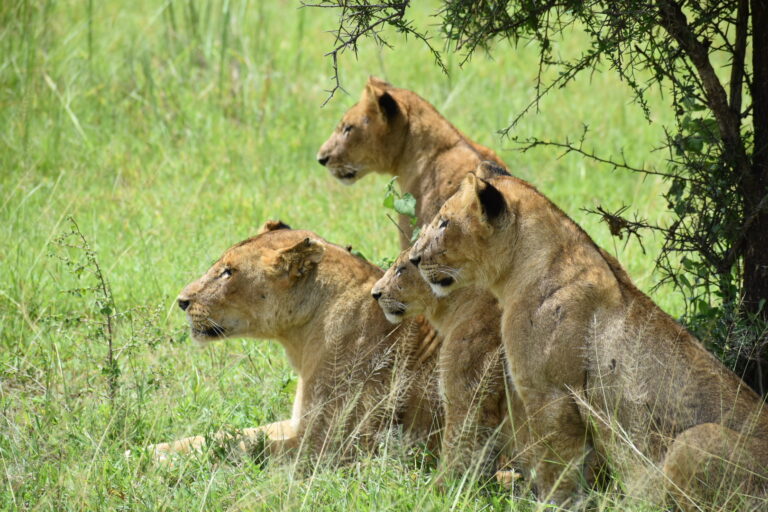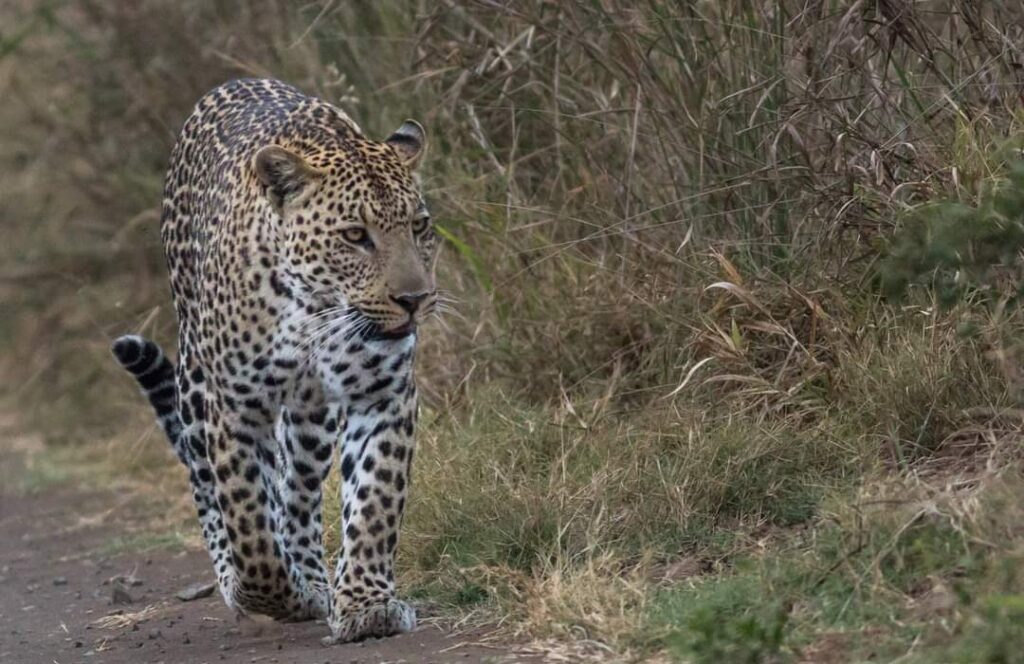What are the African BIG 5
and where can you see them in Tanzania?

African Lion – courageous King of the jungle
An African lion is the largest predator on land. Preys of the lion include zebra, impala, giraffes, and other herbivores like wildebeest. A group of lions is called a pride and males are easily distinguished from females because of their large manes. The darker the lion’s manes, the older he is.
A male lion is sometimes referred to as the king, but in reality, lions don’t have a permanent social hierarchy. The dominant male in a lion pride can change at any time. The females hold the territory and stay with the pride in which they were born. They also do most of the hunting and take care of the cubs. Lions use their roar as a form of communication and can be heard up to 5 miles away.

Leopard – sneaky and excellent tree climber
The African leopard is the most solitary and elusive animal of the Big 5, staying hidden during the day. They are the least seen of the Big 5 and on most occasions found alone. The leopard is nocturnal and mainly hunts at night. Their kills include zebra and antelopes like Thompson Gazelle. The elusive leopards hide their prey in a tree to prevent lions and hyenas from stealing it. A lion and leopard both belong to the African big cats, but they can’t get along. A lion will kill a leopard if it has the chance. A leopard is also a good swimmer and occasionally eats fish.


Rhino – most endangered species of the Big 5

Buffalo – most dangerous to humans
The African buffalo is very territorial and protective and is probably the most dangerous animal of the big five to humans. If this cow-like animal feels threatened it can become very aggressive and charge with astonishing speed. Buffaloes are mostly found in groups and large herds and spend a lot of their time grazing. Both male and female buffaloes have horns, but the males’ horns curve and come together in the center, forming a big bony plate called a boss.
The primary predator of the buffalo is the lion. A buffalo will try to protect and rescue another member of the herd and they have even been seen killing a lion after the lion had killed a member of the group. Although the African buffalo and water buffalo resemble each other, they are not closely related.
